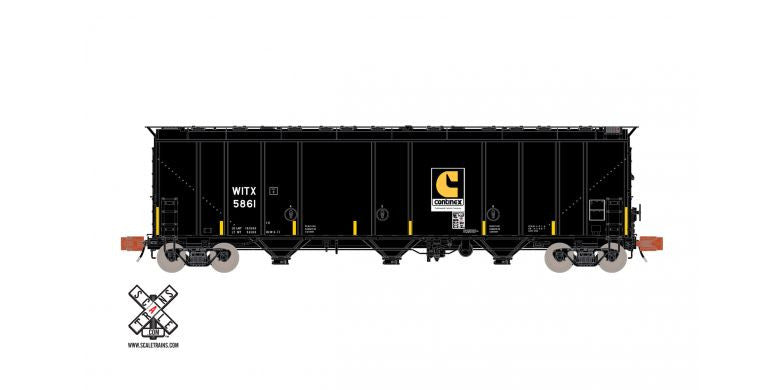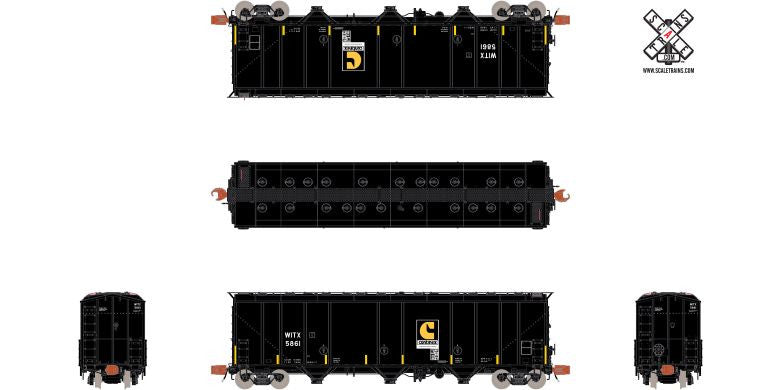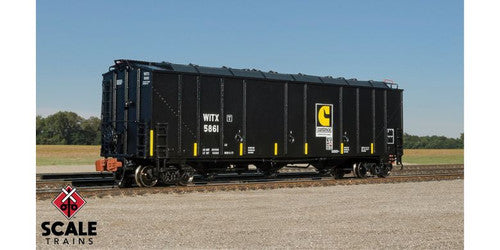Discover the ScaleTrains SXT32114 N Scale 5750 Carbon Black Covered Hopper, specifically the Witco/WITX #5861 model. Note that the picture might show a different road number. This model represents an era from the mid - 2000s to the present. The Series 5861 - 5884 was built in 6/77. It features a large Continex logo on the car side, FRA - 224 reflective stripes, 22 round roof loading hatches, and paint that matches Tru - Color Paint color TCP - 171 Weathered Black. There are four different road numbers available. The 1970s carbody has 10 column - style posts per side and a unique “stepped” roofline. It comes with separate granuflator plumbing, 22 or 28 roof hatches, photo - etched stainless - steel running boards and end platforms, and separately - applied ladders. The underbody brake detail is finely detailed, and it has body - mounted semi - scale Type E knuckle couplers. The ASF Gould - cast 70 - ton Ride Control Trucks have finely rendered raised foundry data and 33” machined metal wheels. The minimum radius is 9 ¾” and the recommended radius is 11”. As a Rivet Counter N Scale Freight Car, it's fully assembled with multiple road numbers. Factory - applied metal grab irons, coupler cut levers, and trainline hoses are included. The intricate brake plumbing, legible printing and lettering (even under magnification), and weighted design for reliable operation are great features. It operates on Code 55 and 70 rail and comes in a clear jewel box packaging. Carbon black, a byproduct of the petrochemical refining industry, is widely used in various industries like automotive, inks, paints, and plastics. Covered hoppers like this one are ideal for hauling it. The design dates back to the 1920s. These cars can be found in large groups near major producers or users or in mixed freight trains. In 1992, Thrall introduced a 4727 cubic foot carbon black covered hopper, different from the 5750cf design.



Using your ScaleTrains 5750 Carbon Black Covered Hopper is easy. Just place it on your Code 55 or 70 rail track. Make sure the track radius is at least 9 ¾ inches, but 11 inches is recommended for better operation. When handling the model, be gentle as it has many delicate parts like the photo - etched stainless - steel running boards and separately - applied ladders. Avoid touching the printing and lettering to keep them looking sharp. To maintain your hopper, keep it in the clear jewel box packaging when not in use. If it gets dirty, use a soft, dry cloth to gently wipe it. Check the couplers and wheels regularly to ensure smooth operation. Over time, if you notice any loose parts, you can use a small amount of glue to re - attach them carefully.









